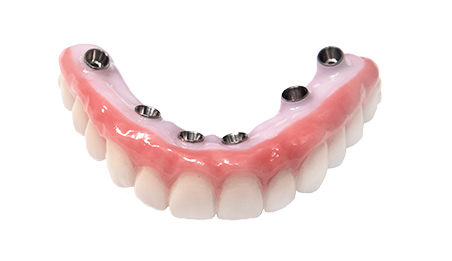The Best Guide To Dental Sense
The Best Guide To Dental Sense
Blog Article
The smart Trick of Dental Sense That Nobody is Discussing
Table of ContentsDental Sense Fundamentals ExplainedDental Sense Fundamentals ExplainedSome Known Questions About Dental Sense.The Main Principles Of Dental Sense
are medical devices operatively implanted into the jaw to recover an individual's capacity to eat or their look. They give assistance for fabricated (phony) teeth, such as crowns, bridges, or dentures. When a tooth is lost because of injury or disease, an individual can experience issues such as rapid bone loss, faulty speech, or adjustments to eating patterns that result in pain.Oral dental implant systems include a dental implant body and oral implant joint and may likewise include a joint addiction screw. Dental veneers cost. The dental implant body is operatively inserted in the jawbone in area of the tooth's origin. The oral implant abutment is normally affixed to the implant body by the joint fixation screw and extends with gum tissues into the mouth to sustain the attached artificial teeth
(https://hubpages.com/@dentalsense1)Framework of The Oral Implant System picking oral implants, talk with your dental company regarding the potential benefits and risks, and whether you are a prospect for the procedure. Things to take into consideration: Your total wellness is an important consider figuring out whether you are a great prospect for dental implants, the length of time it will certainly take to heal, and for how long the dental implant may remain in location.
Cigarette smoking might impact the healing process and lower the long-lasting success of the dental implant. The recovery procedure for the implant body may take several months or longer, throughout which time you normally have a momentary abutment in place of the tooth. the dental implant procedure: Meticulously adhere to the dental health instructions given to you by your oral supplier.
The 4-Minute Rule for Dental Sense
Implant failing can lead to the demand for an additional operation to fix or change the dental implant system. Recovers the capacity to chew Restores cosmetic look Helps maintain the jawbone from reducing as a result of bone loss Protects the wellness of the surrounding bone and periodontals Assists keep adjacent (neighboring) teeth steady Boosts quality of life Damages to bordering all-natural teeth during dental implant positioning Injury to the surrounding cells throughout surgical procedure, such as sinus perforation Injury throughout surgical treatment (as an example, crack of bordering jawbone) Inadequate function, such as feeling like the teeth do not attack together generally A sensation that the tooth is loosened or turning in area resulting from an abutment screw loosening up Implant body failure (looseness of the implant body) because of systemic infection, which might be more probable in patients with unrestrained diabetes mellitus as a result of neighborhood infection in bone and gums supporting the implant body due to delayed recovery, which may be more probable in individuals that smoke Trouble cleansing the periodontals around the dental implant, leading to poor oral hygiene Without treatment gum disease Post-surgical numbness due to nerve impingement or damage Constantly alert health and wellness treatment companies and imaging professionals that you have dental implants before any magnetic resonance imaging (MRI) or x-ray treatments.
FDA is not mindful of any type of damaging occasions reported for MRI or x-ray procedures with oral implants. Oral implants systems are normally constructed from materials that comply with worldwide consensus criteria of the International Organization for Standardization (ISO) or ASTM International. These criteria have details of what makes a risk-free product.

A dental implant is a framework that changes a missing tooth. With screw-like gadgets, the doctor inserts an implant right into the jawbone, and it functions as an anchor for a fabricated tooth, called a crown. A tool called an abutment links the synthetic tooth to the dental implant. The crown is personalized to fit the individual's mouth and match the shade of their teeth.
See This Report about Dental Sense
Some people are not qualified for dental implant surgery. It read the full info here is for oral surgeons to operate individuals with: intense illnessuncontrollable metabolic diseasebone or soft cells condition or infectionIf these concerns are settled, an individual can have the surgery. In, dental doctors avoid running on individuals with: If individuals with any one of the above go through dental implant surgical treatment, there is a higher danger of the implant failing.

Oral implant surgical treatment is a personalized procedure. It's not the same for everybody. The adhering to gives a general overview of what you can expect your dental professional, dental cosmetic surgeon, periodontist or prosthodontist to do: Put the dental implant surgically. Provide you time to recover. Affix the post and final crown, bridge or denture.
Next off, your doctor will carefully place the dental implant right into your jaw. Your doctor will certainly rearrange your periodontals and shut the incision with stitches. If your implant is near the front of your mouth, your dental expert will certainly make a momentary tooth for you to put on till you recover. In this way, you will not have a gap in your smile while you recover.
Dental Sense - Questions
Your copyright can tell you what to anticipate in your scenario. During the recovery phase, your jawbone needs to fuse to the oral implant. This procedure, called osseointegration, is critical for security and long-term success. This process can take anywhere from 3 to 9 months. Sometimes, it might take longer.
When your implant heals, your dental expert can attach the joint (tiny connector message) and your last repair (crown, bridge or denture). This normally takes concerning one hour to complete and may call for a second minor surgical treatment. You shouldn't really feel any pain throughout your oral implant procedure due to the fact that your service provider will certainly use medication to numb your periodontals.
Report this page